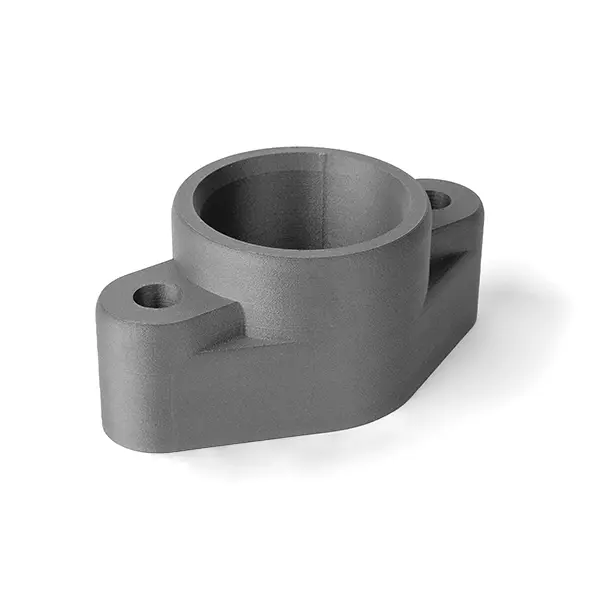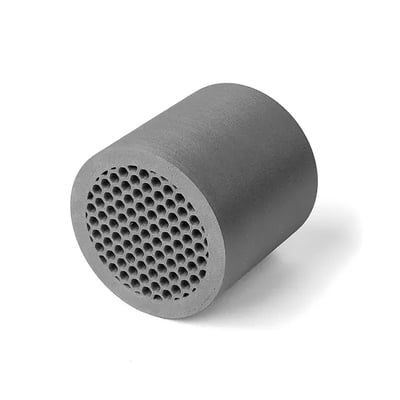2 min read
PPS CF: The New High-Performance Material for Weerg 3D Printing
Starting today, Weerg expands its range of FDM 3D printing materials with the introduction of PPS CF (carbon fiber-reinforced polyphenylene sulfide),...
2 min read
![]() Weerg staff
:
Nov 19, 2025
Weerg staff
:
Nov 19, 2025

Starting today, Weerg expands its range of FDM 3D printing materials with the introduction of PPS CF (carbon fiber-reinforced polyphenylene sulfide), a carbon fiber-reinforced engineering polymer that offers exceptional mechanical strength, thermal stability and stiffness.
Weerg expands its range of FDM 3D printing materials with the introduction of PPS CF (polyphenylene sulphide reinforced with carbon fibre) — a technical polymer offering outstanding mechanical strength, thermal stability, and rigidity.
In the following article you will find:
What is PPS CF
Advantages of PPS CF
Annealing of PPS CF
Applications of PPS CF
Comparison between PPS CF and Other Technical Materials
PPS (Polyphenylene Sulphide) is a semi-crystalline polymer belonging to the family of high-performance thermoplastics (HPPs).
The CF (Carbon Fibre Reinforced) version incorporates a percentage of carbon fibres, which dramatically increases structural stiffness while reducing thermal deformation and improving dimensional stability.
Excellent thermal resistance
Outstanding chemical resistance to solvents, oils, fuels, and acids
Low moisture absorption → high dimensional stability
High dielectric strength → suitable for electrical and electronic applications
Reduced thermal expansion coefficient thanks to carbon fibre reinforcement
Exceptional heat resistance: operational up to 260 °C without performance loss
Superior structural rigidity due to carbon fibre reinforcement
Excellent chemical and corrosion resistance
Outstanding dimensional stability, even under temperature variations
Lower weight than metals, yet comparable mechanical properties
Compatible with harsh environments (oils, solvents, fuels)
Excellent electrical insulation and dielectric strength

At Weerg, PPS CF printed components can undergo a controlled annealing process — a thermal treatment that stabilises the material and enhances both mechanical and thermal performance.
Annealing, performed over 20 hours, allows for:
Increased heat deflection temperature (HDT) up to 255 °C
Reduction of internal stresses accumulated during printing
Improved long-term dimensional stability
This treatment is particularly recommended for technical and functional components intended for demanding operating environments.
Aerospace: lightweight, heat-resistant structural components
Automotive: brackets, supports, housings, and enclosures for engines or sensors
Electronics: connectors, insulators, and high-temperature precision parts
Chemical industry: components exposed to acids, solvents, or steam
Robotics and precision mechanics: rigid parts with tight tolerances
|
Material |
Maximum temperature (°C) |
Chemical resistance |
Rigidity |
Cost |
|
PPS CF |
260 |
Excellent |
Very high |
Medium-high |
|
PEEK CF |
300 |
Excellent |
Very high |
High |
|
PA12 CF |
180 |
Good |
High |
Medium |
|
ABS CF |
100 |
Medium |
Medium |
Low |
PPS CF offers an ideal balance between performance and cost, positioned just below PEEK CF in terms of technical performance, but with a superior price-to-performance ratio.
PPS CF is an outstanding material for industrial applications requiring high rigidity, thermal resistance, and dimensional stability.
Thanks to carbon fibre reinforcement, it combines metal-like mechanical performance with reduced weight and superior chemical resistance.

2 min read
Starting today, Weerg expands its range of FDM 3D printing materials with the introduction of PPS CF (carbon fiber-reinforced polyphenylene sulfide),...

3 min read
Fused Deposition Modeling (FDM) 3D printing is one of the best-known and most widely used additive manufacturing technologies in the world.Prized for...

2 min read
HP Multi Jet Fusion (MJF) 3D printing technology continues to evolve through the introduction of new high-performance materials — and leading the way...